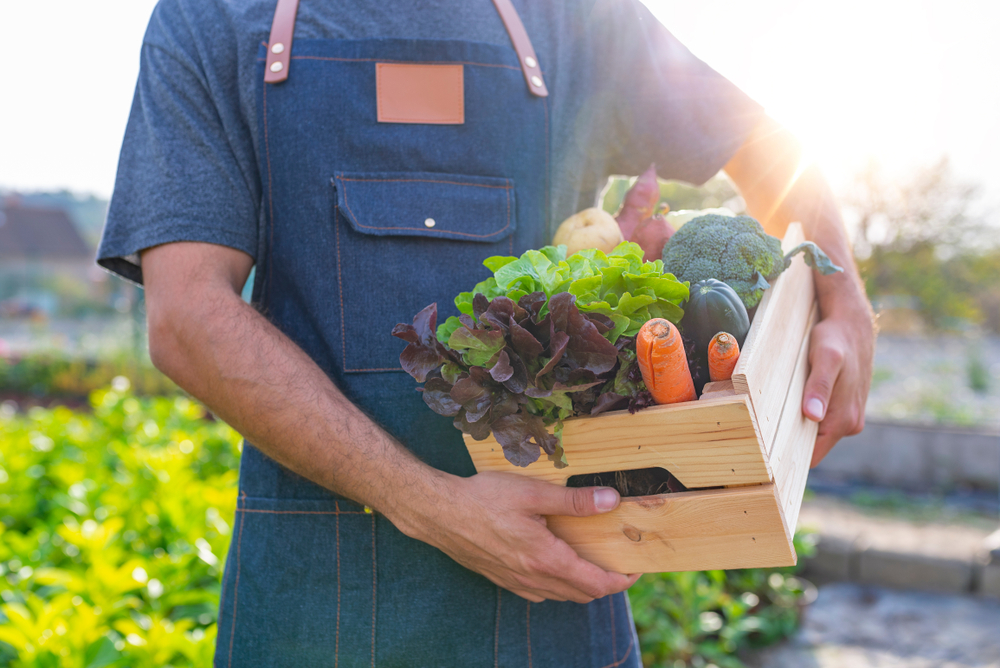Last Updated on June 11, 2024 by admin_hunter
If you have been searching for the best foods to grow in a survival garden, you have come to the right place. In this article, you will learn about several different types of food, including lentils, potatoes, and squash. These foods are not only beneficial for your health, but they also serve as excellent additions to your meals.
Potatoes
Potatoes are a good choice for a survival garden because they are versatile, easy to grow, and high in calories. They are also rich in vitamins and minerals and are a great source of carbohydrate.
During a SHTF scenario, you need to have a nutritionally dense diet. However, you need to make sure that you are not taking on too much food. There are many foods out there that will not grow in all areas, so you need to be savvy in what you choose.
One of the best survival crops is the sweet potato. Sweet potatoes are a root crop that can be boiled, steamed, baked, or fried. Their antioxidant properties boost morale and they have a long shelf life.
Depending on the type of potato you grow, you can have a harvest as early as June. You can store them for up to six months in a cool, dry place such as your cellar.
It is important to remember that potatoes are part of the Solanaceae family. This means they have a lot of antioxidants and are an excellent source of vitamin C.
Although they are the number one vegetable crop in the United States, potatoes are also a popular food source worldwide. Fortunately, they are easy to grow and can handle a variety of climates.
Unlike other vegetables, potatoes have a very long shelf life. You can keep them for up to eight months if you keep them well cured.
Carrots
Carrots are known for their sweet flavor and crunchy texture. They are also packed with antioxidants and vitamin C.
This vegetable can be eaten fresh or frozen. It is a great addition to a survival garden.
You can find a variety of carrot varieties at the supermarket. They are easy to grow. A great beginner’s carrot is the Little Finger Carrot.
Another excellent choice is the Wild Carrot Heirloom. This plant is an ancient wild carrot that grows well in sandy soils.
A calorie dense crop is ideal for a survival garden. If you need to store food for a while, carrots and potatoes will help you do that.
In addition to their nutritional benefits, carrots are also a good source of potassium. Vitamin K is important for maintaining strong bones.
Carrots are a wonderful source of fiber. They also provide good vitamins and minerals for your eye health.
Some of the best ways to store carrots is in a cool, moist place for several months. But you can also freeze them for longer periods of time.
They also taste great when they are fresh. If you are trying to preserve food, they are a perfect addition to soups or stews.
Another survival garden staple is spinach. Spinach is filled with vitamins and nutrients. When it’s not used, it can be crushed and dehydrated for storage.
Beets are another great option. They are a nutrient-packed vegetable that is great to add to soups or stews.
Squash
If you’re planning to have a survival garden, it’s important to choose foods that can be harvested in a timely manner. You should also consider the food’s nutritional value. The best crops are the ones that are both nutritious and easy to grow.
For example, radishes are great for adding a bit of spice to your salads. They are easy to grow and can be harvested within a few weeks.
Another must have in your survival garden is spinach. It’s a great way to get vitamins and minerals into your body.
Sweet potatoes are another excellent option. They are rich in antioxidants and calories. And, they can be baked, fried, or steamed.
Beans are a great addition to a survival garden. They’re a nitrogen fixer and are good for thick soils. However, you should make sure that you’re growing them in the right place.
For a long shelf life, carrots are a great choice. This is a vegetable that can be eaten fresh or dried. Carrots can last for a few months in your refrigerator.
Squash is another great vegetable to have in your survival garden. Not only are they nutritious, but they are easy to grow and store. When grown whole, winter squash can keep you going for months.
Potatoes are another must have in a survival garden. They are a good source of carbohydrates and potassium.
Lentils
One of the best ways to keep your family healthy during a crisis is to have a survival garden. You can fill it with high-calorie, high-nutrient foods. It’s important to pick foods that are easy to grow and harvest.
In addition to being tasty, fresh herbs are full of vitamins and minerals. A lot of them also have medicinal qualities. They can help alleviate sicknesses and reduce inflammation.
Lentils are one of the oldest crops in cultivation. They are high in protein and are ideal for stews.
Beans are another great crop to grow in your survival garden. They are nitrogen fixers, absorbing fertilizer from the air. This gives them a good shelf life.
Sweet potatoes are another great option to consider. They are a source of antioxidants and Vitamins A, B, and E. These vegetables have a shelf life of up to five weeks in the refrigerator.
Garlic is another plant to consider. Garlic contains bioactive compounds that can help reduce inflammation. Fresh garlic can be stored in the freezer or in a crisper drawer. For longer storage, it can be dried.
Green beans are another vegetable to consider. They are a good source of calcium and vitamin K. Their nutrient density increases when they are dried.
Peppers are also a great choice. Not only are they a flavorful spice, they can be used to make dry chili powder.
Herbs and spices
If you’re planning to create your own survival garden, you need to know which herbs and spices to plant. They add flavor to your food and offer many medicinal benefits. Here are a few suggestions.
You’ll find that herbs are easy to grow. For starters, you don’t need rich soil to grow them. That said, you do need to make sure your soil is rich enough to grow them.
Some common herbs include thyme, sage, basil, rosemary, and chives. Others, such as mint, have a hard time growing in areas with cold weather. However, some herbs can be planted after the last frost of spring.
In addition, you can grow some herbs indoors. A small pot is all that is needed for some herbs. Keep in mind that herbs will need more watering than an average houseplant.
Some herbs prefer to grow in full sun. But some are more shade-tolerant. Check the back of the seed packet to see what the recommended sunlight level is.
Another thing to keep in mind is nutrition. Your garden should contain calorie-dense foods. The more active you are, the more calories you will need.
There are two basic types of herbs: those that are used for culinary purposes and those that are used for medicinal purposes. It’s important to have a balance between the two.
Herbs that are used for culinary purposes have a high nutritional density. They contain plenty of vitamins, minerals, and fiber.
Superfoods
One of the best ways to build a stable food source for your family is to grow a survival garden. Not only will a survival garden give you healthy, nutritious food, it will also provide you with a source of energy, morale boosts and an overall good feeling.
In order to have a successful survival garden, you need to know what plants to grow. There are some superfoods you can grow that will make your life easier and more fun.
If you’re trying to make a garden that will last for years, you should consider growing a few herbs. These plants are not only useful for cooking and seasoning, but they also contain important minerals and vitamins.
Radishes are a quick-growing food. They can be harvested in a few weeks, and their flavor can add a bit of spice to cold dishes.
Kale is one of the best survival vegetables you can grow. It’s a dense vegetable, and it will stand up to both cold and hot weather. Besides, it’s packed with antioxidants and anti-inflammatory compounds.
Potatoes are a nutrient-dense root food. They’re easy to grow, and they store well. You can use them for sandwiches and casseroles, and they’re delicious in soups.
Beans are another popular choice. They’re protein powerhouses. They can be eaten fresh or dried for longer storage. Their high levels of potassium and calcium mean they’re great for preventing fractures.

